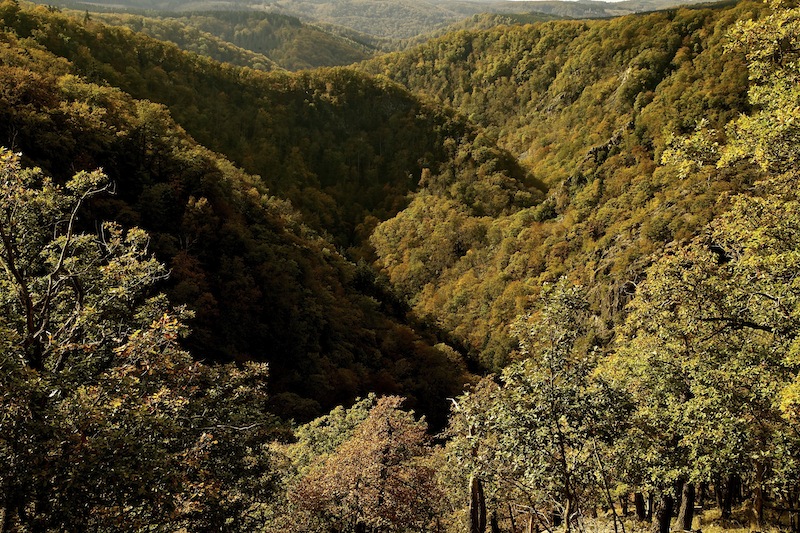Autumn Colors
Even October had been again too warm compared to average temperatures in middle Europe over many years before, the change of colors of leaves indicated that winter isn’t so far away. When green becomes yellow it’s an awesome sight. The wild Bode valley in the Harz Mountains sometimes called “the German grand canyon”, is always a great place for photography of nature, particularly in October. Vegetation looks in some spots more like in Norway or some remote alpine region rather than a forest in Northern Germany. In the lower regions of the Harz Mountains, the forest is dominated by beech trees and oak trees. The oaks are often smaller as in flat regions and exhibit bizarre forms on the top of the hills. At the “Hexentanzplatz” viewpoint above the valley and the village of Thale, you can see an endless forest with many shades of yellow and brown, and many visitors come here during the weekends.
The colors are further differentiated by the change between sunlight and clouds obscuring the sunlight. Even the so-called “Indian summer” or “golden October” is a very common motive it’s worth to take some time and watch the forest and landscape for hours.
Where we see a green sea of trees during summer there are now many details to be seen in the forest, and these details always change when clouds appear and create different settings of light. We might hope for these typical crisp and very clear blue sky days in autumn but for taking pictures a thin veil of clouds isn’t so bad because the light is softer, and you haven’t to handle as many sharp contrasts or very dark areas when taking pictures. Morning hours are often a good time before the mist has completely disappeared.
Enjoying nature or taking photographs in autumn is a lot about the right timing. It’s often only a few days in autumn where the veils of mist lift and the sun break through which offer unforgettable moments. In the mountains, one big storm or a lot of rain put the magic then quickly to an end. Unlike last year where a devastating storm hit Northern Germany in October weather was more friendly this year. Other areas in Europe weren’t so lucky when particularly in November Northern Italy and Southern France was suffering from flooding. The South side of the Alps got an incredible amount of rain. If it rains on the South side of the alps it gets warm in Southern Germany because of the “Föhn”-wind, a strong dry wind, which make the sky dark and blue and you can look very far. It’s also notorious for its effects on human health and behavior as giving you headaches. The phenomenon is a bit similar to the Santa Ana winds in California. The “Föhn” effect is also possible in lower mountain regions as the Harz mountains, however, doesn’t create such extraordinary clouds like in Southern Germany or Austria. The Harz mountains usually get more rain on the west and northern side where rain clouds from the Northern sea arrive. The Bode Valley is on the east side of the mountains. The Northern Germany region enjoyed moderate temperatures even in November and there weren’t really big disruptions from cold weather and snow so far. >


